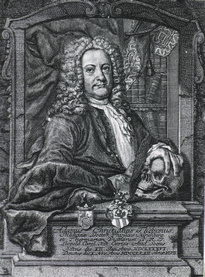This article is part of the series "A Moment in History" where we honor those who have contributed to the growth of medical knowledge in the areas of anatomy, medicine, surgery, and medical research.
Adam Christian Thebesius (1686- 1732). German physician and anatomist, Thebesius studied in the University of Leiden, Netherlands, where he received his doctorate in 1708 with the thesis "De circulo sanguinis in corde" (on the circulation of the blood in the heart). In 1713 he became a member of the Royal Academy of Natural Scientists (Kaiserliche Akademie der Naturforscher), where he adopted the Latin name "Eyryphon". Besides his natural sciences and medical research, Thebesius developed an interest in astrophysics.
Extremely interested in coronary circulation, Thebesius injected dyes and fluids in the coronary arteries, veins, and coronary sinus. Along with Raymond Vieussens (1635-1713) , Thebesius described all these structures. Today his name is attached to the eponymic Thebesian veins (venae cordi minima), and the Thebesian valve guarding the exit of the coronary sinus into the right atrium of the heart. Both these structures were mentioned in his 1708 doctoral thesis
Sources:
1. “The Role of the Thebesian Vessels in the Circulation of the Heart” Wearn, J.T. J Exp Med. 1928 January 31; 47(2): 293–315
2. The Story Behind the Word. Some Interesting Origins of Medical Terms. Wain,H. 1958.
3. The Origin of Medical Terms. Skinner, H.A. 1970
Original image in the public domain, courtesy of the National Library of Medicine




